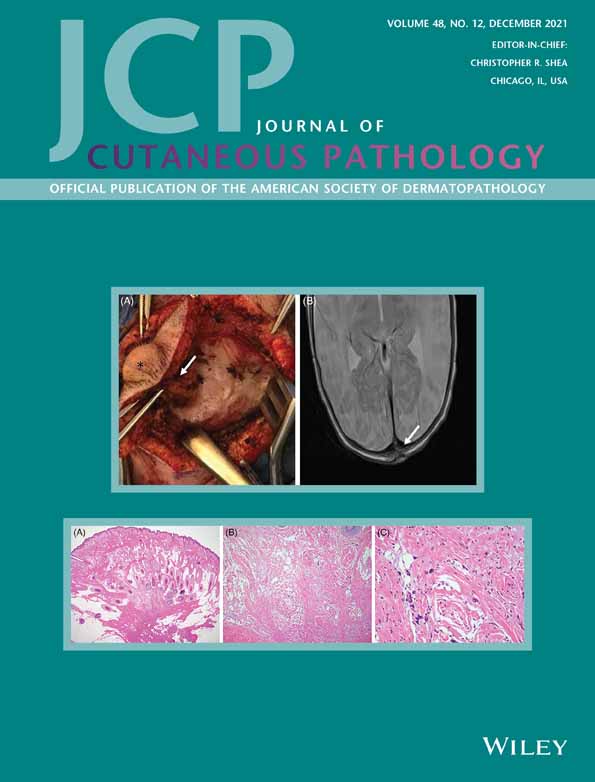Indolent CD8+ primary cutaneous T-cell lymphoma involving the eyelid of an adolescent
Abstract
Primary cutaneous acral CD8+ T-cell lymphoma (PCACTL) is currently a provisional entity defined as a rare cutaneous proliferation of atypical CD8+ lymphocytes that preferentially involves acral sites and has a good prognosis. We present a case of primary cutaneous CD8+ T-cell lymphoma involving the eyelid of an adolescent male. The case shares features with PCACTL, including indolent clinical behavior and expression of CD68 in a Golgi-associated dot-like pattern; however, other features differ significantly from PCACTL as currently defined by the World Health Organization (WHO). These features include ulceration, expression of CD56, granzyme B, and perforin, and a high proliferative index. Given these discrepancies, our case is currently best classified as a CD8+ primary cutaneous peripheral T-cell lymphoma, not otherwise specified. We review the differential diagnosis for this case and suggest expanding the definition of PCACTL.
Open Research
DATA AVAILABILITY STATEMENT
The data that support the findings of this study are available from the corresponding author upon reasonable request.




